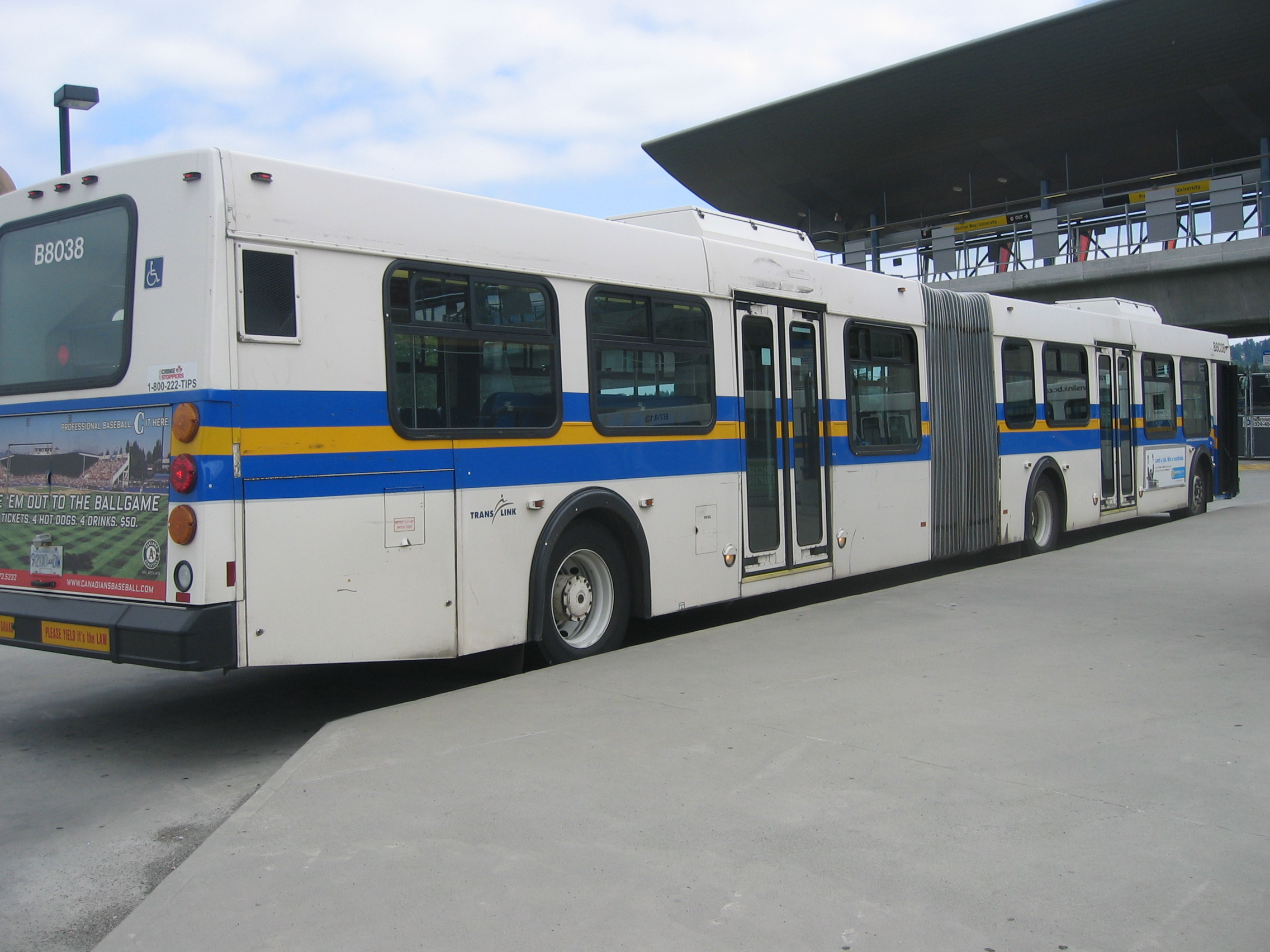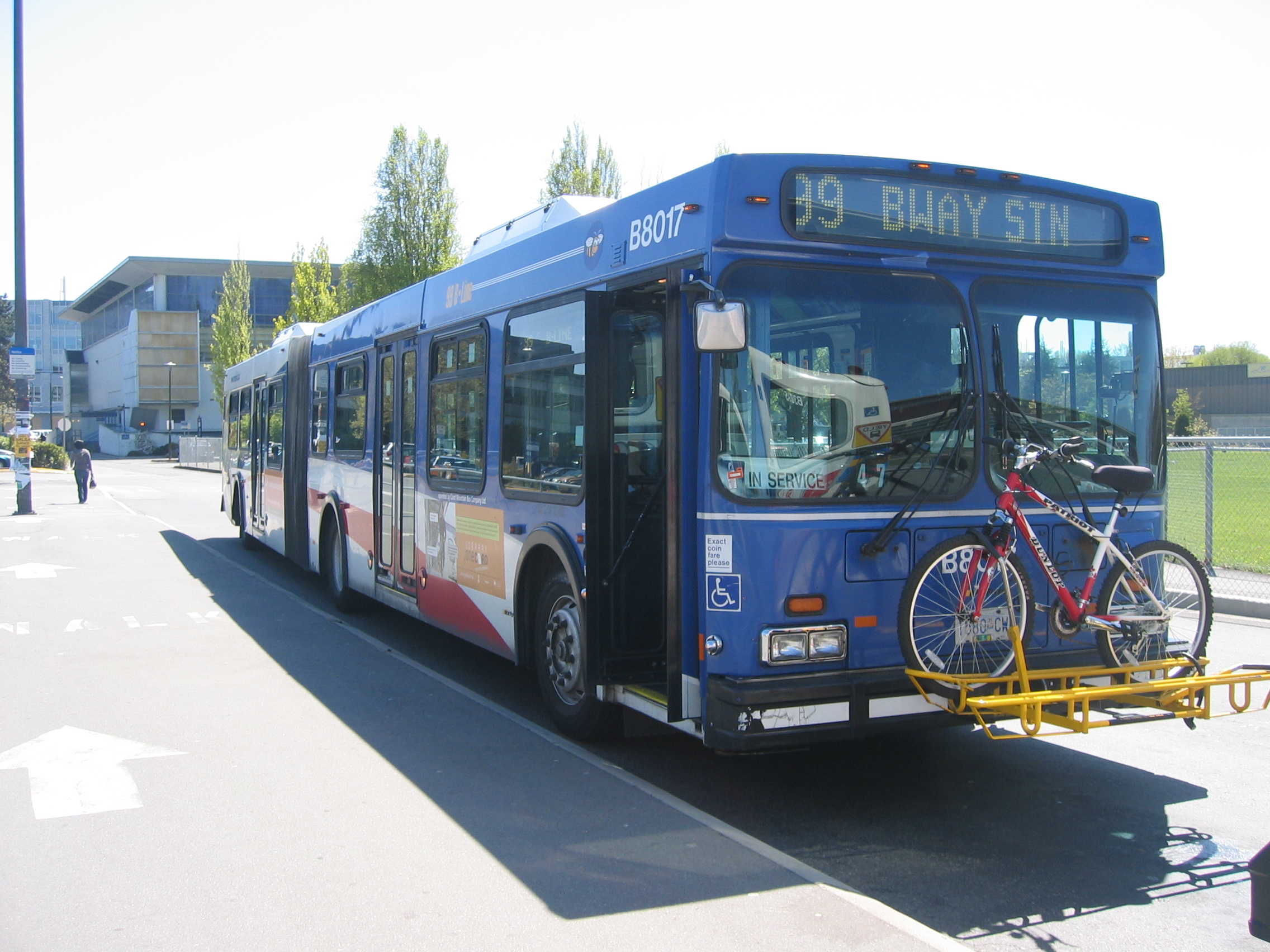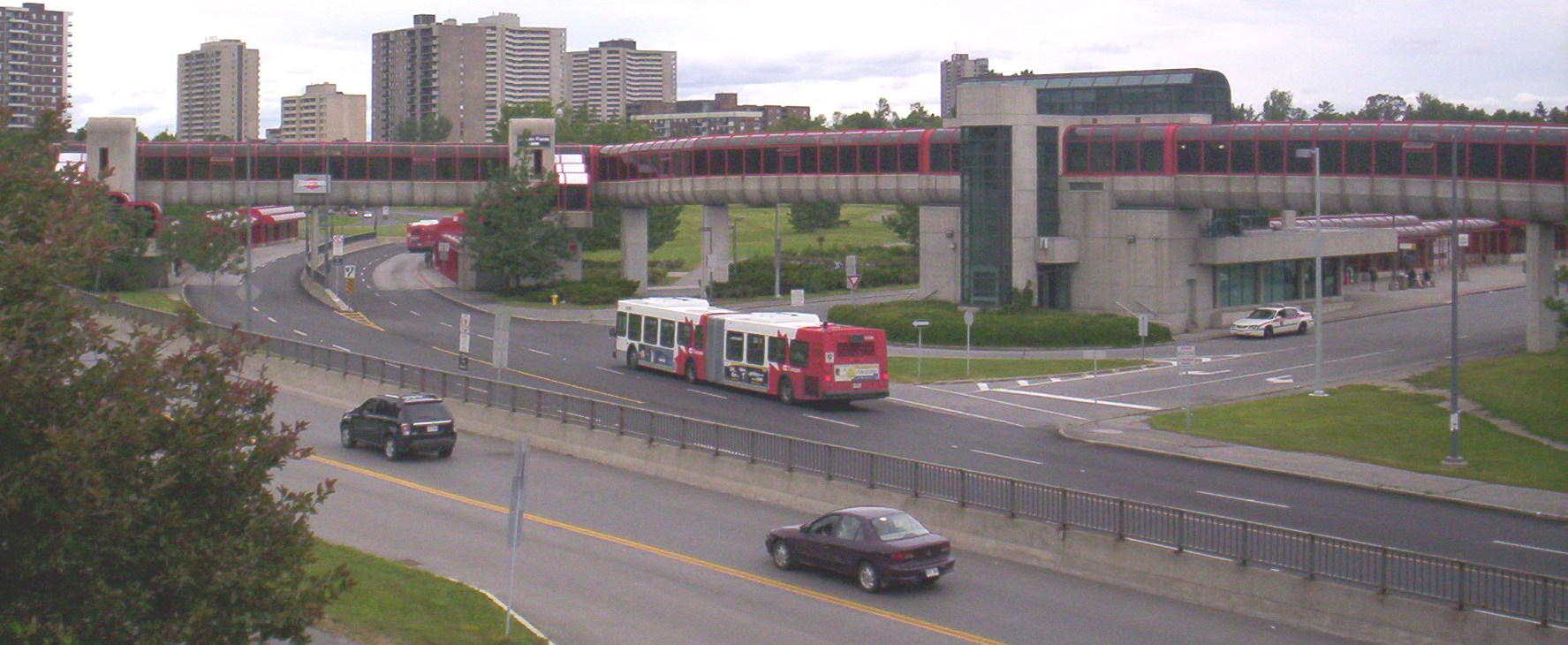Bus Rapid Transit - Low cost, high impact
Aside from Streetcar/Light Rail, Mayor Miller proposed a network of bus ways along major corridors to bring rapid(er) transit to all corners of the city. But what exactly does he mean? What is bus rapid transit or a bus way? Is VIVA an example? With this post, I hope to dispel some of the confusion.Vehicles
Any bus can be used for a bus rapid transit route. Low floor buses are generally used for the accessibility features, ensuring universal access. Since they are normally used on high-demand routes, articulated buses are often the norm. In the case of VIVA, special buses in special paint schemes were used as a promotional tool, but this isn't the rule. Vancouver uses standard New Flyer D60LF models in unique paint for their B-Line service, and Grand River Transit does the same for it's iXpress service while Ottawa's Transitway uses D60LF and D40i models in the normal paint schemes.


Above is a standard Coast Mountain Bus Company bus in Vancouver. Below it is a bus used on the 99 B-Line route. The special paint is a type of marketing, allowing people to identify the premium service at a glance.
The ultimate form of bus rapid transit uses premium transit buses with unique paint schemes in the same way VIVA does.
Fare Collection
In order to reduce dwell times, bus rapid transit routes generally have proof-of-payment systems in place, letting passengers with valid tickets or passes board via all doors. On an articulated bus, this means loading time is up to three as fast. Some Van Hool double-artics can have five doors, further speeding up boarding times. For passengers who need to pay, ticket vending machines will be provided for them to buy tickets before hand. When a fare card system is in place, the reader will be either on board the vehicle or at the stop. VIVA's system is the ideal in this case.
Guide Way
Bus rapid transit can be considered rapid transit is because it operated independently of traffic. Normally this comes in the form of transit-only lanes on roads, only running in mixed traffic where absolutely necessary. A Spadina-style centre reservation is preferable, especially if local routes still use the road, but curb lanes can still work if the local police strictly enforce them. Usually, buses will get signal priority at intersections, allowing green lights to stay green longer if the bus is running behind. Another option is to construct a bus-only road running parallel to the travel corridor. Ottawa has done this in the outlying areas, with transit-only lanes in the downtown. In Adelaide, Australia, a unique guided bus way is in use, where buses drive onto a track and are taken at high speed into the suburbs.


Where there's is space, a transit only corridor can be used to provide rapid transit service between the suburbs and the city. In Ottawa (above), the Transitway parallels the major highways radiating from the city centre. In Adelaide, the O-Bahn (below) takes buses from the suburbs to the downtown with the efficiency of a railway.
For the inner city, phase two of VIVA is an example of bus rapid transit in its highest evolution. To connect the city to the suburbs, transitways are the way to go. In most cases, bus rapid transit guide ways are built to be rail-ready, in case capacity issues warrant upgrading to light rail.
Stations
In order to maintain the "rapid" part, bus rapid transit lines cannot stop at every stop along the route. Like VIVA, stops are only located at major intersections and major destinations. For transit-only lanes, a typical stop will consist of a roadside shelter, a ticket vending machine and a display indicating the arrival time of the next vehicle. Normally, a special sign will be used to distinguish bus rapid transit stops from local service stops. When a bus-only road is used, the stations can be much more intricate, with many more services available.

The station at Westboro on Ottawa's transitway has a platform for each direction with a walkway connecting the two sides. The facility is fully accessible, and serves 59 routes. Many stations on the outskirts of the city are build in a simillar style.
The station spacing used by VIVA is what bus rapid transit is designed to be. Local routes should still be operated to cover the gaps, but care must be taken to ensure they don't hold up the rapid transit services.
Conclusions
Care must be taken when talking about bus rapid transit services when compared to bus-only lanes. If buses stop at all stops along the route, it's not bus rapid transit in the truest sense of the word. Either way, this technology has a low setup cost, can deliver results immediately, and using a phased implementation, can be up and running in a few years. If we are truly too poor for subways, then bus rapid transit is an option that we should (are have) seriously consider.
I'll leave you with a series of videos about a bus rapid transit system being implemented in Eindhoven in The Netherlands. Part 1, Part 2 and Part 3 are here. Could we see it in the GTA? I sure hope so.
Labels: bus rapid transit


0 Comments:
Post a Comment
Subscribe to Post Comments [Atom]
<< Home